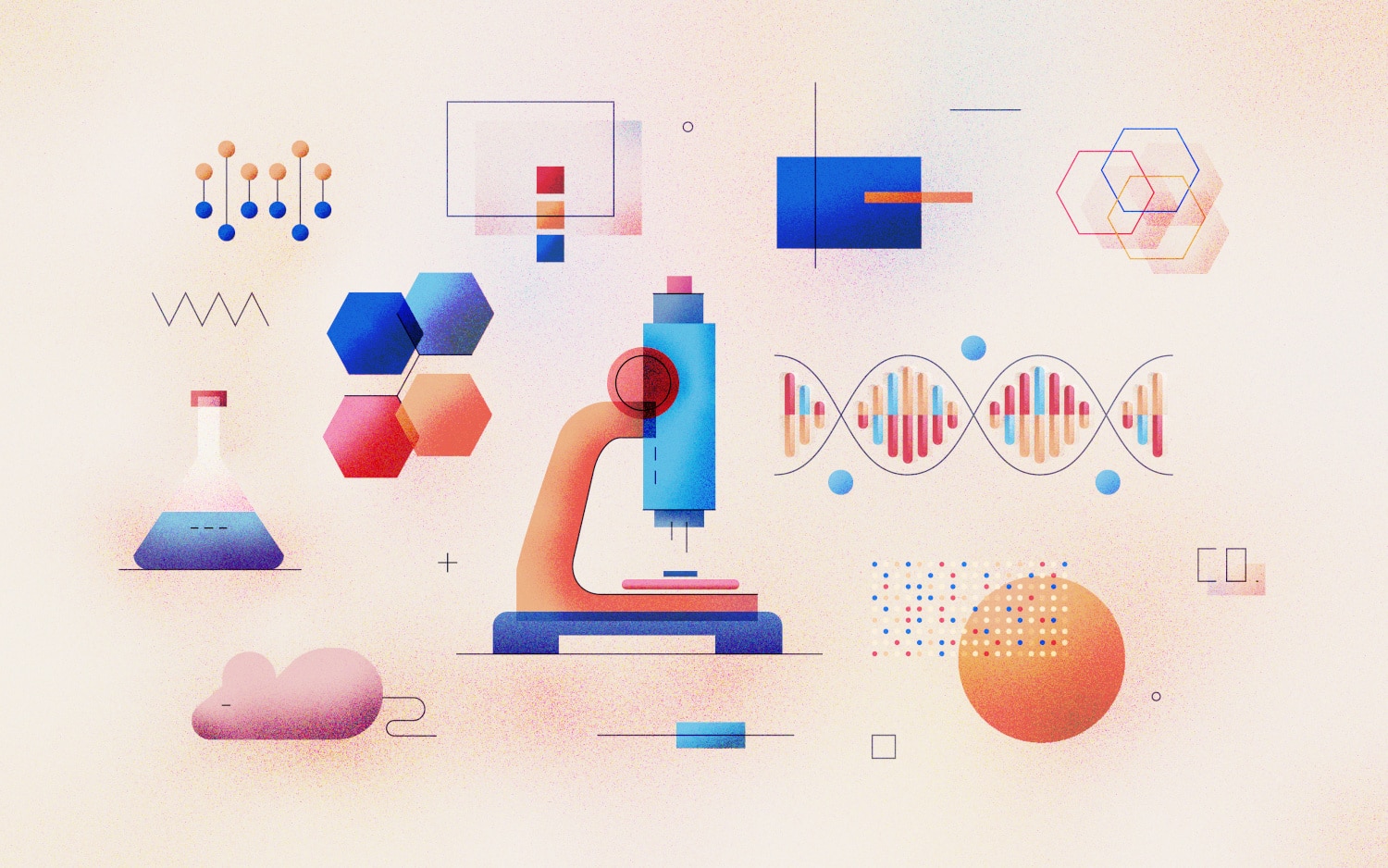The global population is projected to increase from an estimated 7.7 billion people today to around 8.5 billion in 2030 and even 9.7 billion in 2050. This increase in population alone will lead to a yearly one per cent increase in demand for agricultural commodities. The global demand for agricultural products, however, is expected to increase at a much higher rate. Due to additional income, dietary shifts, and changes in non-food demand, for instance for various industrial and energy producing processes, an annual demand growth rate for agricultural raw materials of about 2.0 per cent and more is plausible. Hence, global agriculture must provide considerably more output to satisfy the future accelerating demand.
MORE WITH LESS

This alone is already a substantial challenge. It is made even more difficult by the increasingly difficult environment in which EU farmers must produce in the future. Climate change, various societal objectives and numerous environmental constraints narrow the alternatives to produce healthy food and other agricultural produce. The growing societal demands are reflected in the EU’s Farm to Fork and Biodiversity strategies. Better inputs, as opposed to an increased amount thereof, are needed to cope with these future challenges. For crop production, this means that yields must be increased through efficient inputs. Consequently, better machinery, better and less fertilizer, better and less plant protection products and, of course, improved seeds must be employed on less agricultural land.
CONTRIBUTIONS OF PLANT BREEDING IN THE EU
Our most recent research aimed to highlight major socio-economic values and environmental benefits of plant breeding performed in the EU. More particularly, we answered the question if and to what extent plant breeding in the EU has contributed, and still contributes, to increased yields and production in arable farming. These increases lead to improved market and trade conditions, increased world food supply, higher economic prosperity and social welfare, additional farm income and jobs, lower land use, reduced greenhouse gas emissions, the preservation of biodiversity, and reduced water usage.
TEN HIGHLIGHTS
Based on sophisticated modelling and calculation tools of agricultural and environmental economics, as well as a comprehensive assessment of plant breeding contributions to yield and overall productivity growth in EU arable farming, we analysed the impacts of plant breeding for the EU (still including the UK) and major arable crops. Our research findings are summarised in ten highlights:
- On average and across all major arable crops cultivated in the EU, plant breeding contributed approximately 67 per cent to all sectoral innovations since the turn of the millennium. This is equal to a 1.16 per cent yield increase per annum and results in manifold benefits for farmers and society at large.
- Due to plant breeding in major arable crops in the EU over the past two decades, yields per hectare as well as arable production have increased. On average, crop production would have been over 20 per cent lower in 2020 without genetic improvements since the turn of the millennium.
- Higher yields per hectare increase the supply of primary agricultural products on international markets. For example, an additional 53 million tons of cereals and almost eight million tons of oilseeds are currently produced in the EU due to plant breeding progress in the past two decades. This contributes to stabilising markets and reducing price volatility.
- Plant breeding also improves the EU agricultural net trade balance. Without plant breeding progress in the past 20 years, the EU would have become a net importer of all major arable crops in 2020, including wheat and other cereals.
- Plant breeding in the EU is also indispensable for combating hunger and malnutrition, as it improves world food security. Given current European and global food baskets, genetic crop improvements in the EU over the past 20 years have contributed to the additional availability of food for far over 100 million people.
- Furthermore, plant breeding in the EU generates additional economic prosperity by increasing the gross domestic product. The entire agricultural value chain benefits, from input suppliers to final consumers. In 2020 alone, genetic crop improvements in EU arable farming since the turn of the millennium have generated additional social welfare of more than EUR 14 billion in the agricultural sector and have added more than EUR 26 billion to the GDP of the EU in total.
- Plant breeding for arable farming in the EU also secures employment and increases farmers’ and agricultural employees’ income. On average, approximately 6,100 EUR per fully employed farmer are attributed to plant breeding over the past two decades. This is approximately one third of the current arable farm income in the EU. Moreover, almost 90,000 jobs have been created and secured in the arable sector this way. Additionally, many more jobs have been created upstream and downstream the agricultural value chain in the EU.
- Plant breeding in the EU does not only bring about positive economic and social effects. It also generates substantial positive environmental impacts. It especially contributes to the conservation of global scarce land resources by generating higher yields per unit of area. The absence of plant breeding for major arable crops in the EU over the past 20 years would have led to the expansion of global agricultural acreage by more than 21.5 million hectares by 2020.
- This contributes to the preservation of natural habitats and the reduction of greenhouse gas emissions resulting from an expansion of the global acreage. In the two decades prior to 2020, a total of almost 4.0 billion tons of direct CO2 emissions were avoided due to genetic improvements in EU major arable crops. In addition, plant breeding in the EU generates a large positive biodiversity effect. Without the successes in EU plant breeding over the last 20 years, a global biodiversity equivalent to the species richness found in 8.3 million hectares of rainforest and savannahs in Brazil or in 11.8 million hectares of natural habitats in Indonesia would have been lost by 2020, in addition to what has already disappeared.
- Finally, plant breeding in the EU for major arable crops over the past two decades has contributed to the global conservation of scarce water resources. Without plant breeding, an additional almost 50 million m3 of water would be necessary today globally. This is equivalent to the water volume of Lago di Garda.
In summary, plant breeding for arable crops in the EU over the past 20 years has surely created many opportunities for the agrarian economy, the rural environment, and society. In the future, this perspective is expected to change only a bit. Most of the indicators that have been analysed with respect to plant breeding for major arable crops in the EU since the turn of the millennium show a rather stable and similar, or an even higher value level, if applied to potential plant breeding progress in upcoming decades. Hence, successfully innovated genetic crop improvements in the EU have been and will be essential for economic, social, and environmental benefits at large scale in the future. They are a highly effective measure for adapting to new challenges and very dynamic settings.
[tweetshare tweet=”Successfully innovated genetic crop improvements in the EU have been and will be essential for economic, social, and environmental benefits at large scale in the future.” username=”eyJtZDUiOnRydWV9″]
EXPECTATION: A DECREASE IN EU AGRICULTURAL PRODUCTION
Fulfilling the various objectives of the EU Farm to Fork and Biodiversity strategies marks a considerable new challenge for farmers in the EU, as agricultural production is expected to considerably decrease by 2030 if the two strategies are fully implemented. Plant breeders are certainly able to help compensate negative effects that may arise from a production decline triggered by the strategies. However, our research suggests that plant breeding-induced innovations at the current pace may not suffice to fully counteract the potential impact arising from an implementation of the two strategies by 2030. At the current pace of plant breeding, production and subsequent market supply losses due to the implementation of the two strategies by 2030 could potentially only be halved by plant breeding in the next decade.
MIND THE GAP!
What could possibly fill the subsequent gaps in the future, as plant protection and fertilization must be reduced with the two strategies and land machinery and other technologies have long-lasting investment intervals? Again, plant breeding is considered a potential game changer in this context. For plant breeding to be effective in this context, the processes aiming at genetic crop improvements must be sped up. All available technologies must be used for this, especially those able to provide genetic crop improvements in a more targeted way and shorter time. In addition, the overall policy and regulatory framework must encourage and not hinder the necessary investments in future plant breeding.
ACTING RESPONSIBLY
The time savings attributed to accelerated trait integration and early generation selection of new plant breeding techniques alone will be substantial and certainly lead to a considerable additional plant breeding-induced yield growth. This will certainly help to achieve the ambitious goals of, for instance, the Farm to Fork and Biodiversity strategies at European scale and the Sustainable Development Goals at global scale. Provided that the EU sees itself as a responsible actor that accepts the global and regional challenges involved herein and wants to play its part in meeting these challenges, it follows that economic, social, and environmental considerations must be recognised in a balanced way when making policy decisions about the use of such new technologies.
[tweetshare tweet=”Plant breeders are certainly able to help compensate negative effects that may arise from a production decline triggered by the EU Farm to Fork and Biodiversity strategies.” username=”eyJtZDUiOnRydWV9″]
AVOIDING TRADE-OFFS
Plant breeders’ efforts have helped and continuously help to create synergies and avoid trade-offs embedded in multiple objective settings since plant breeding is a highly effective measure for adapting to new challenges and mitigating negative consequences that may arise when addressing manifold challenges. But is plant breeding able to go beyond its previous contributions?
It certainly should, since increased crop productivity through the development of superior plant varieties may play a substantial role in the future and the adaptation of other improved land and crop management practices may be limited. This makes plant breeding an extremely important area of research and development. Plant breeders must take responsibility by increasing their investment into innovation. They must not only target higher harvestable yields but also other characteristics of a plant. These include pest and disease resistance, other agronomic traits, product quality, crop adaptation, and genetic diversity as well as orphan crops.
PUBLIC AND POLICY SUPPORT IS A MUST
Plant breeders in the private and public science sector are certainly willing and have the tools to implement this. Yet, success does not depend on science alone. It is also influenced by social acceptance and policy decisions. To encourage plant breeders to further invest in the development of new and better seeds as well as the necessary sophisticated breeding technologies, appropriate policy decisions and public support are a must. Support should include strengthening fundamental research in plant breeding and making evidence-based policy decisions for regulating.
In this respect, our study should be considered an initial step in supporting and motivating this public and policy debate. However, further interdisciplinary research and evidence-based information campaigns need to follow and should be supported by policy makers and other public decision-makers, including scientists.
ENABLING INVESTMENT
A proportionate and result-focussed regulatory framework is needed to establish clear and sustainable rules for the European plant breeding sector. Instead of delaying or even hindering European plant breeders in their investment in the necessary resources for urgently needed future economic productivity increase and environmental resource use efficiency growth, a legal setting that encourages development should be established. New plant breeding technologies constitute a diverse group of techniques, each of which can be used in various ways to achieve different results and products. Therefore, safety considerations depend on the individual technique, how it is used and the characteristics of the resulting product. Thus, these must be determined on a case-by-case basis. Moreover, expert opinions consider that genetically and phenotypically similar products deriving from the use of different techniques are not expected to present significantly different risks. EU policy makers and regulators should take this into consideration when discussing potential future regulatory options.
[tweetshare tweet=”If the EU sees itself as a responsible actor, economic, social, and environmental considerations must be recognised when making policy decisions about new plant breeding technologies.” username=”eyJtZDUiOnRydWV9″]
CONGENIAL PARTNERS
We have shown that plant breeding in the EU has made and will continue making important contributions towards sustainable agriculture in the future. Meeting sustainability criteria is especially important due to the Farm to Fork and Biodiversity strategies. In this respect, plant breeding and these two strategies may be considered congenial partners that depend on each other and may reinforce each other’s positive effects. In other words, the objectives of the Farm to Fork and Biodiversity strategies and, hence, the European Green Deal can hardly be achieved in the future without accelerated plant breeding in the EU. To credit this importance, European plant breeders must be increasingly recognised by policy makers, regulators, and society as supporters of sustainable development in agriculture and beyond.
Editor’s Note: Steffen Noleppa is Managing Director of HFFA Research GmbH, in Germany.












